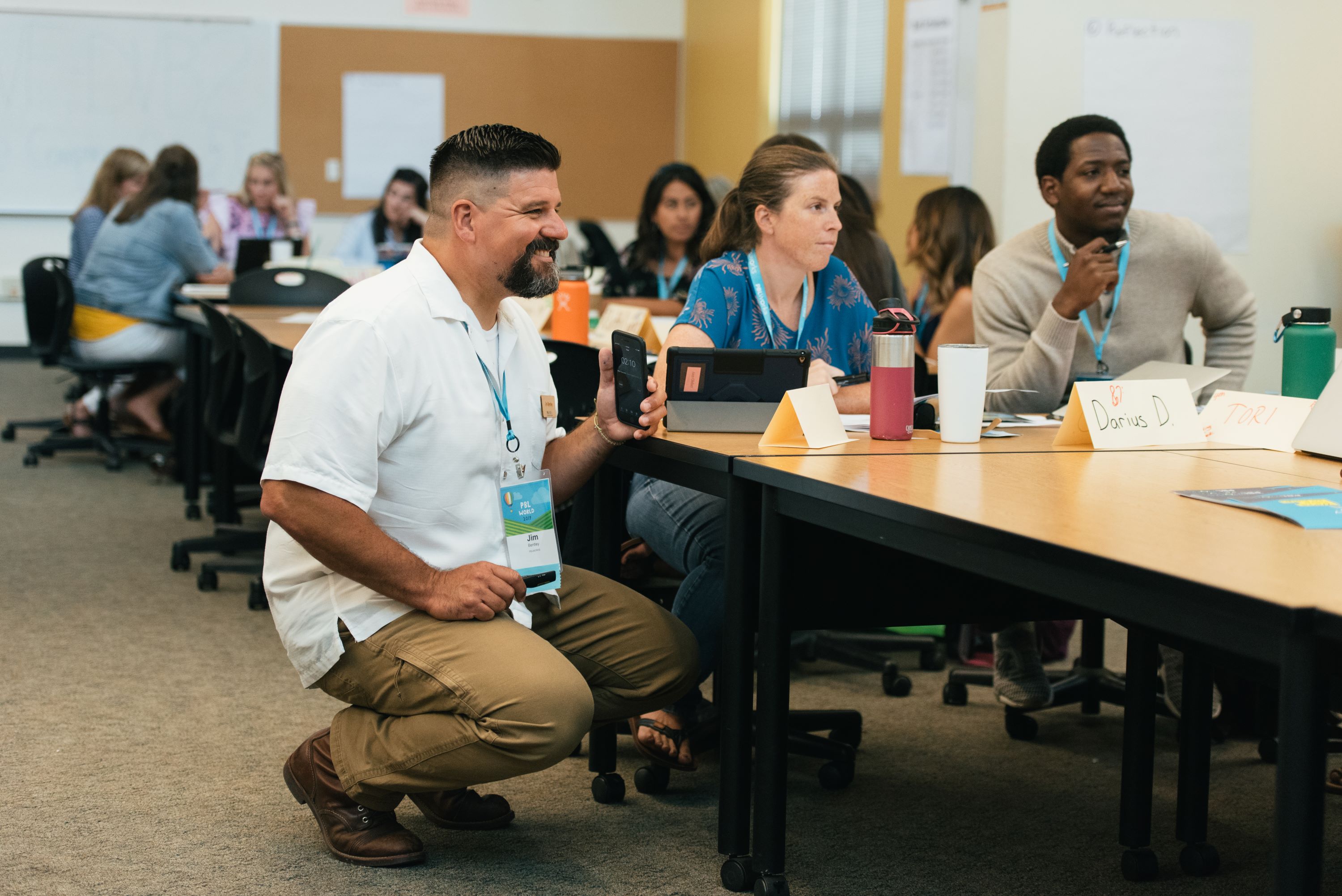
How important is technology for the success of PBL? And which tools belong in your PBL toolkit?
Rather than loading up project plans with the latest apps and other digital tools, teachers will get better results if they focus first on key learning goals across the arc of a project. That’s the seasoned advice of two members of the PBLWorks National Faculty who facilitated a pre-conference workshop on PBL+Technology at PBL World 2019.
“We want teachers to slow down and think about their ‘why?’ first,” says Jim Bentley (@Curiosity_Films), a veteran elementary teacher from California whose students accomplish important outcomes through a thoughtful integration of PBL+Tech.
“There are times when technology will make things better in PBL and times when it’s the worst thing you can do,” adds James Fester (@saintfester), a technology integration support specialist in Minnesota. “You don’t want students focusing on a shiny object.”
Bentley advises teachers to consider, “What is the purpose of technology at this part of the project? What do they want to elevate—to make more powerful or robust? If that’s when you decide to integrate tech, how is it raising the bar?”
Using the SAMR model when planning projects
To help teachers think more critically about tech integration in PBL, workshop facilitators had participants evaluate their plans with the SAMR model. SAMR asks teachers to consider whether technology is Substituting, Augmenting, Modifying, or Redefining the learning experience.
As an example, Bentley shared an Esri Storymap created by his students. To gather data for the map, students conducted an in-depth investigation into where people can access drinking water in their community. One day of field research by students netted 152 data points about the locations of drinking fountains and water refill stations at schools, parks, sports complexes, and even restaurants and shopping malls.
Geo-tagging that mountain of data enabled students to quickly organize their observations on a map, leaving them thinking time to consider solutions to their driving question, “How can we make water more accessible and reduce plastic waste in our parks and schools?” The final map combines data, imagery, and narrative writing to educate public audiences about the issue.
Deciding if and when tech would be useful
To help teachers find opportunities for more effective technology integration, Fester and Bentley guided participants through a storyboarding activity. Teachers sketched out key project milestones from start to finish, from entry event to the final sharing of a public product. Then, they considered whether technology would be useful at each milestone. That process helped them develop technology integration plans in which tech was used to elevate thinking and deepen student learning.
Only after those plans were in place were teachers ready to consider specific tech tools. They shared out their favorite tools and digital resources with a “demo slam” brainstorming session to end the day on a high note.
“Now they have a pile of tech ideas they can take back to their schools,” says Fester, “and think about what’s going to work best for them—and for their students.”
Suzie Boss (@suzieboss) is a member of PBLWorks National Faculty and the author of Project Based Teaching. She continued the conversation about PBL+Tech at the recent ISTE conference in Philadelphia; see the ISTE website for links to her session materials. Here's a crowd-sourced PBL + Tech Guide from one of her sessions.

